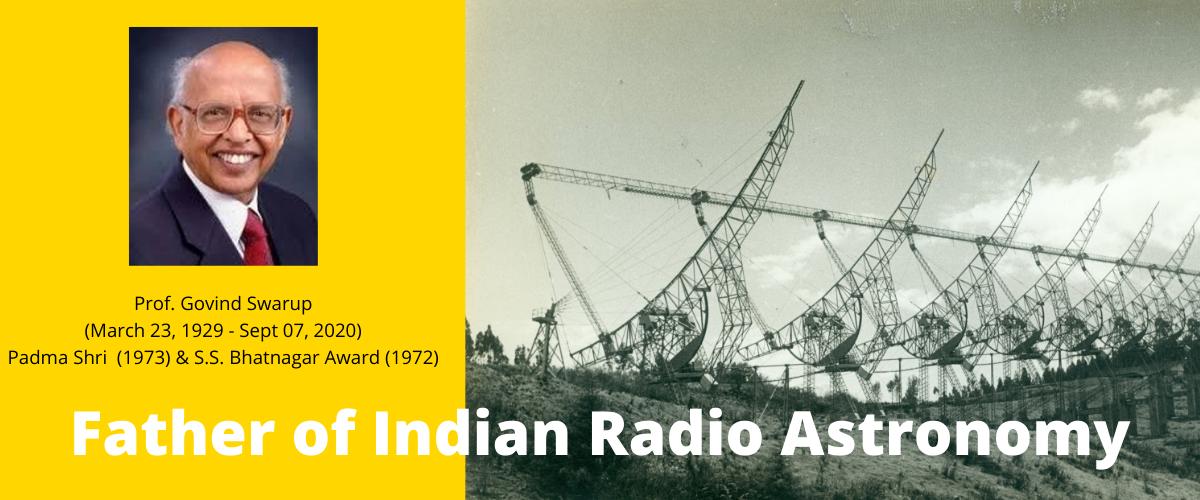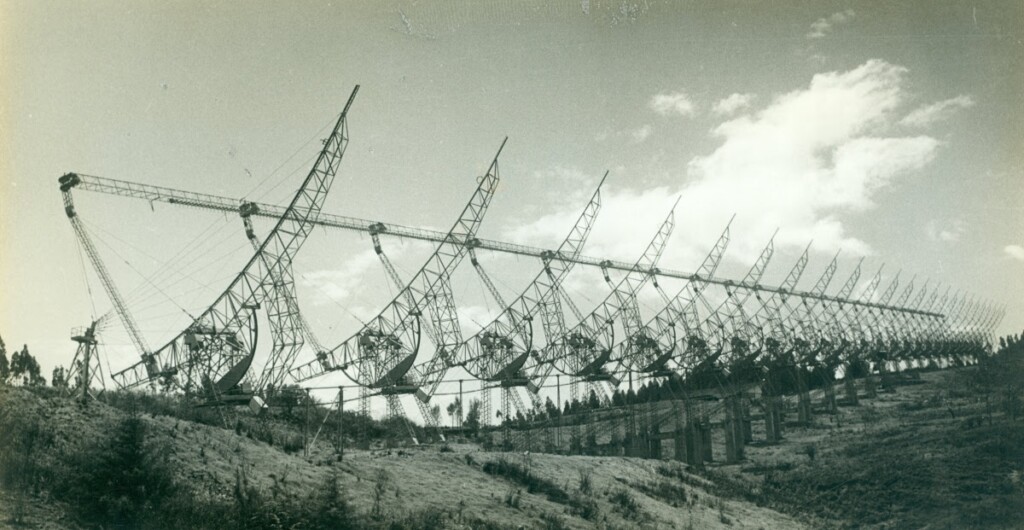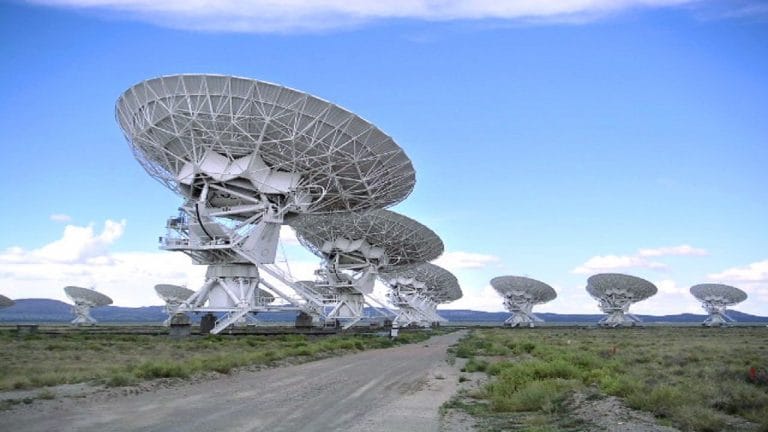Society for Promotion of Science & Technology in India (SPSTI), a not-for-profit NGO, pays tribute to the Father of Indian Radio Astronomy, Prof. Govind Swarup who left for his heavenly abode on September 07, 2020.
Born in 1929, Govind Swarup was one of the pioneers of radio astronomy in India. “He was known not only for his important research contributions but also for his leadership in building highly innovative, world-class radio telescopes such as the Ooty Radio Telescope and the Giant Metrewave Radio Telescope (GMRT), which firmly established India as one of the leading countries for radio astronomy research
Education
Prof. Swarup was born in the small town of Thakurdwara, located in the modern day Uttar Pradesh, on 23 March 1929. He received B.Sc. degree in 1948 and M.Sc. in Physics in 1950 from the Allahabad University and PhD from Stanford University in 1961. He was awarded Doctor of Engineering (Honoris Causa), University of Roorkee in 1987 and Doctor of Science (Honoris Causa), Banaras Hindu University in 1996. He was at the National Physical Laboratory, New Delhi (1950–53 and 1955–56), CSIRO, Australia (1953–55), Research Associate at Harvard University (1956–57), Research Assistant at Stanford University (1957–60) and Assistant Professor at Stanford University (1961–63). He was also Doctor of Science (Honoris Causa), Banaras Hindu University in 1996 and Pt. Ravishankar Shukla University, Raipur in 2010.
His vision to establish the newly emerging field of astronomy in India got accelrated when Prof. Homi J. Bhabha offered him a faculty position at Tata Institute of Fundamental Research, Pune.
Major Contributions
During 1963–70, he constructed a 530 m long and 30 m wide parabolic-cylindrical radio telescope of a unique and innovative design at Ooty in South India, which was placed on a suitably inclined hill so as to make its long axis of rotation parallel to that of the earth, enabling it to track celestial radio sources in hour angle for 9.5 hrs. Using the method of lunar occultation, it provided for the first time high-resolution angular data (1 to 10 arc sec) for more than 1,000 weak radio sources, which provided an independent evidence for the Big Bang model.
During 1984–96, he conceived and directed the design and construction of the Giant Metrewave Radio Telescope (GMRT), consisting of 30 fully steerable parabolic dishes of 45m diameter that are located in a Y-shape array of about 25 km in extent in Western India. A novel concept developed by him made it possible to construct such large antennas very economically.



